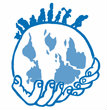This month the World Trade Organization threw in the towel on COVID-19.
Reports Search
The latest draft of the World Health Organization’s (WHO) pandemic agreement, which was sent out to member states on
The United States, the European Union, and several South American countries allegedly blocked attempts by the Chair o
A G20 High Level Independent Panel (HLIP) on Financing the Global Commons for Pandemic Preparedness and Response was
Several members of the World Trade Organization sought to know from the facilitator overseeing the reform of the WTO’
The Marrakesh Agreement Establishing the World Trade Organization (WTO) allows WTO Members to agree to temporarily wa
In the Democratic Republic of Congo, the fight against mpox – previously known as monkeypox – is entering a new phase
Member States of WHO secured a desperate win in reaching consensus on the amendments to the International Health Regu
The COVID-19 pandemic has exposed fragilities in the global health architecture that contributed to countries being i
Pagination
- Previous page
- Page 41
- Next page
